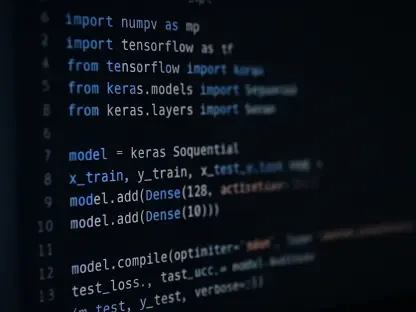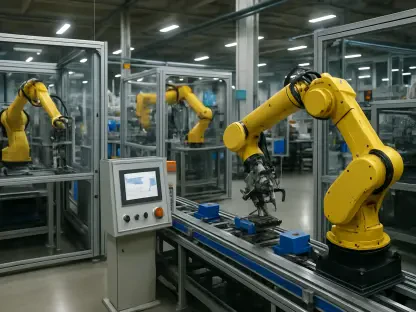The ambitious expansion of London-based Wayve into the United States marks a significant milestone in the realm of autonomous vehicle technology. Founded in Cambridge in 2017, Wayve has quickly become a prominent player in the industry, driven by substantial investments exceeding $1.3 billion from prominent backers like Softbank, Nvidia, Microsoft, Uber, and Eclipse Ventures. The company’s core mission revolves around developing an adaptive, data-driven AI driver that can generalize across different vehicles and urban landscapes. By establishing a new office in Silicon Valley and launching a comprehensive testing program in San Francisco, Wayve is poised to refine its AI-based Advanced Driver Assistance Systems (ADAS) in real-world, diverse driving conditions. This significant leap aims to supplement their existing trials in the UK and is a crucial part of their global strategy to achieve higher levels of vehicle autonomy.
Wayve’s Testing Program in San Francisco
The choice of San Francisco for Wayve’s on-road testing in the United States is strategic, given the city’s complex driving environment and diverse road conditions. San Francisco’s unique topography, unpredictable weather patterns, and varied traffic scenarios present ideal conditions for testing adaptive AI technology. This real-world testing is designed to complement Wayve’s ongoing trials in London, offering a broader array of data and scenarios for the AI to learn from. Such an environment accelerates the AI’s iterative learning process, enabling it to tackle edge cases and improve its decision-making capabilities across different contexts.
Wayve’s AI software will primarily focus on Level 2+ automation during this phase of testing. Level 2+ automation includes features like automatic emergency braking, adaptive speed control, and precise lane positioning, where drivers remain engaged but the AI performs several driving tasks autonomously. By concentrating on these “hands-off, eyes-on” capabilities, Wayve aims to perfect these foundational functions before moving on to higher levels of autonomy. Collaborating with several global automakers, Wayve is also working towards developing Level 3 automation, which entails “hands-off, eyes-off” functions. At this stage, the AI would allow drivers to relinquish control under certain conditions, marking a substantial leap towards fully autonomous driving.
Advanced AI and Hardware Integration
Integral to the success of Wayve’s autonomous driving technology is its AI software, which runs on Nvidia’s cutting-edge Drive hardware. This integration ensures compatibility with a variety of sensor and computing architectures, allowing Wayve’s solutions to be adaptable to both current and future vehicle models. By harnessing the power of Nvidia’s hardware, the AI can process vast amounts of data in real-time, learning from millions of real-world scenarios. This capability is essential for Verification & Validation (V&V) activities, as the AI constantly evolves by encountering and adapting to increasingly complex driving situations.
The ability to operate in open, unconstrained environments is a distinguishing feature of Wayve’s AI. Unlike traditional rule-based systems that rely heavily on high-definition maps and geofenced routes, Wayve’s technology learns organically from dynamic environments. This mapless approach allows the AI to develop holistic driving strategies that can generalize across various urban landscapes and vehicular setups. Consequently, Wayve’s AI becomes more robust and versatile, paving the way towards Level 4 and Level 5 autonomy, where vehicles can operate independently under most or all conditions without human intervention.
Strategic Collaborations and Future Prospects
Wayve’s strategic alliances with industry giants like Microsoft, Nvidia, and Uber are pivotal to its advancement. By leveraging Microsoft’s cloud computing capabilities, Nvidia’s advanced silicon, and Uber’s mobility services, Wayve enhances its technical infrastructure and accelerates the deployment of its autonomous driving solutions. These collaborations enable Wayve to scale its operations and innovatively address the challenges associated with fully autonomous driving. Furthermore, these partnerships facilitate the global dissemination of Wayve’s technology, enabling a broader range of vehicles to benefit from its AI-driven systems.
The financial backing from such high-profile investors underscores the confidence in Wayve’s vision and technological prowess. This robust financial support is instrumental for Wayve as it navigates the complex landscape of autonomous vehicle regulation and competition. The expansion into the US market is not merely a geographical maneuver but a strategic effort to solidify Wayve’s presence in a critical market poised to be a leader in autonomous driving technology. With a strong foundation and a clear roadmap, Wayve is well-positioned to make significant strides in transforming the future of automotive technology.
Conclusion
Wayve’s autonomous driving technology thrives on its AI software, seamlessly integrated with Nvidia’s state-of-the-art Drive hardware. This integration enables compatibility with various sensor and computing architectures, making Wayve’s solutions versatile for both current and future vehicles. Leveraging Nvidia’s hardware, the AI processes massive amounts of data in real-time, learning from countless real-world scenarios. This ability is crucial for Verification & Validation (V&V) activities, as the AI continually evolves by navigating and adapting to increasingly complex driving situations.
A standout feature of Wayve’s AI is its capability to function in open, unconstrained environments. Unlike traditional rule-based systems that depend heavily on high-definition maps and geofenced routes, Wayve’s technology learns organically from dynamic surroundings. This mapless approach allows the AI to develop comprehensive driving strategies that can adapt across various urban settings and vehicle configurations. As a result, Wayve’s AI becomes more robust and versatile, advancing towards Level 4 and Level 5 autonomy, where vehicles can operate independently under most conditions without human intervention.









